Welcome: Email:
The Group holds a range of events, publishes a monthly newsletter, gives talks about bats to other organizations, monitors planning applications for their impact on bats, surveys and studies bats and provides advice about bats.
Our website is continually updated and improved, so do call back regularly. It is our intention that you will soon be able to find information about the county's bats, about echolocation and bat detectors, bat boxes, coming events and much more.
Now that you have arrived here in the dashboard you will be able to add, edit update or delete any entries that you have created and entered into the database.

 1. The summer is when bats are most active and your best chance of seeing them flying through the sky catching insects.
1. The summer is when bats are most active and your best chance of seeing them flying through the sky catching insects.
2. Try to get outside about half an hour before sunrise or at sunset.
3. You are more likely to see bats in warm dry weather (and you get nice warm sunsets as a backdrop!).
4. Head to a bat hotspot or an area with lots of bat sightings. Bats do move around a lot but they often hunt in the same areas and return to the same roosts every year.
5. Don't just look up. Some bats fly high in the sky, some fly low, others hunt over open areas whilst some tend to stick near trees.
6. And if you are by water keep an eye out for bats skimming the surface!
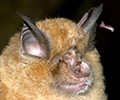
Rhinolophus ferrumequinum
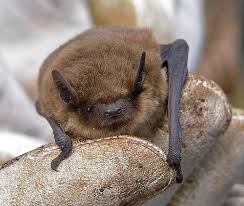
Pipistrellus pipistrellus
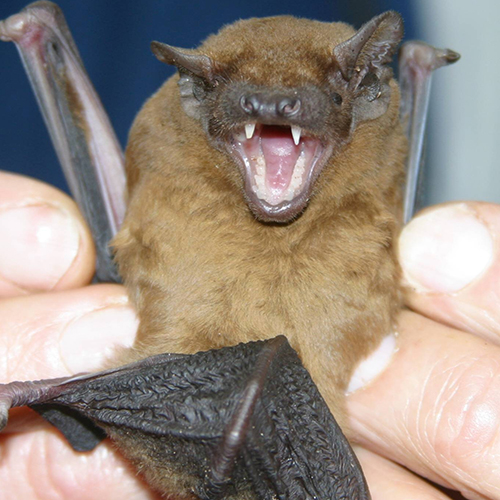
Nyctalus noctula

Plecotus auritus
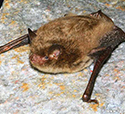
Myotis daubentonii
 The horseshoe bats can be distinguished from other British bats by the presence of a complex horseshoe-shaped noseleaf which is related to their particular type of echolocation system. horseshoe-shaped noseleaf which is related to their particular type of echolocation system.
When roosting they hang free with the wings more or less enfolding their body. Greater horseshoe bats emerge from their roosts within half an hour of sunset. Between May and August they usually return to their roosts after about an hour and remain there until their second feed around dawn. However, from late August they may remain away all night.
The horseshoe bats can be distinguished from other British bats by the presence of a complex horseshoe-shaped noseleaf which is related to their particular type of echolocation system. horseshoe-shaped noseleaf which is related to their particular type of echolocation system.
When roosting they hang free with the wings more or less enfolding their body. Greater horseshoe bats emerge from their roosts within half an hour of sunset. Between May and August they usually return to their roosts after about an hour and remain there until their second feed around dawn. However, from late August they may remain away all night.
Greater horseshoes bats were originally cave dwellers, but few now use caves in summer – most breeding females use buildings, choosing sites with large entrance holes with access to open roof spaces warmed by the sun. Such sites are normally in larger, older houses, churches and barns. A range of other sites is used in spring, and males hold territory at maternity roosts in autumn.
Mating occurs mainly during the autumn, but can take place in late winter or even spring.Maternity colonies begin to gather in May and reach peak numbers in mid-June to July when most breeding females return to the maternity roost. Some males return with breeding females in June, but most leave when the young are born in mid-July. Female greater horseshoe bats are not usually sexually mature until their third year and one known female did not breed until its tenth year. They may not breed every year.Greater horseshoe bats have been known to live for up to 30 years.
Greater horseshoe bats have an almost constant frequency call of about 82kHz. On a bat detector a series of continuous warbles can be heard.
The greater horseshoe bat has shown a marked decline. It is rare in Britain and now confined to south-west England and south Wales. It is estimated that the number of greater horseshoe bats has declined by over 90% in the last 100 years.The decline of the greater horseshoe bat may be due to factors such as disturbance of roosts and intensive agricultural practices including loss of permanent pasture. These bats are particularly sensitive to disturbance at their nursery and winter roosts. Those sites need to be specifically protected and entrance holes left unobstructed.The conservation of the species’ feeding habitats and food sources is also important. The use of pesticides has led to a decrease in availability of larger beetles, particularly cockchafers, and moths over large areas of the countryside
 Pipistrelles are the commonest and most widespread of all British bat species. There are two very similar species, common pipistrelle and soprano pipistrelle. Pipistrelles are the bats that you are most likely to see. They appear fast and jerky in flight as they dodge about pursuing small insects which the bats catch and eat on the wing. A single pipistrelle can consume up to 3,000 insects in one night.
Pipistrelles are the commonest and most widespread of all British bat species. There are two very similar species, common pipistrelle and soprano pipistrelle. Pipistrelles are the bats that you are most likely to see. They appear fast and jerky in flight as they dodge about pursuing small insects which the bats catch and eat on the wing. A single pipistrelle can consume up to 3,000 insects in one night.
Habitats
Common pipistrelles feed in a wide range of habitats comprising woodland, hedgerows, grassland, farmland, suburban and also urban areas. They generally emerge from their roost around 20 minutes after sunset and fly 2-10m above ground level searching for their insect prey, which they catch and eat on the wing by ‘aerial hawking’. Summer roosts of both common and soprano pipistrelles are usually found in crevices around the outside of often newer buildings, such as behind hanging tiles, soffit and barge or eaves boarding, between roofing felt and roof tiles or in cavity walls. This species also roosts in tree holes and crevices, and also in bat boxes. Summer roosts support smaller colonies than soprano pipistrelles, with numbers averaging around 75 bats. Common pipistrelle maternity colonies are more likely to move between roost sites than those of soprano pipistrelles. In winter common pipistrelles are found singly or in small numbers in crevices of buildings and trees, and also in bat boxes. They are often found in relatively exposed locations and rarely underground.
Diet
Feeds mainly on a wide range of small flies as well as the aquatic midges and mosquitos.
Echolocation
Sounds produced by common pipistrelles are above the range of human hearing with the exception of social calls that may be heard by children and some adults with good hearing. With a bat detector (heterodyne) the echolocation calls can be picked up between about 45 and 70kHz. The calls sound like a series of clicks towards the top of this range, turning into ‘wetter’ slaps with the deepest sounding slap being heard at about 45kHz, the peak intensity of the call.
Reproduction & life cycle
During the summer, females form maternity colonies where they give birth to a single young in June or early July. For three or four weeks the young are fed solely on their mother’s milk. After about four weeks the young are able to fly and at six weeks they are able to forage for themselves.
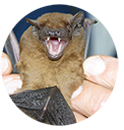 Noctules have a characteristic powerful, direct flight on narrow pointed wings.They fly in the open, often well above tree-top level, with repeated steep dives when chasing insects. Noctule bats can fly at 50 kph. Most food is caught on the wing and eaten in flight but occasionally prey is taken from the ground and in suburban areas noctules are attracted to street lamps to feed on moths. During spring noctules will feed mainly on smaller insects such as midges, changing their diet to take beetles and moths later in the season. They forage mainly at dusk for up to two hours and for about half an hour at dawn. They are known to fly over 10km from roost to feeding areas.
Noctules have a characteristic powerful, direct flight on narrow pointed wings.They fly in the open, often well above tree-top level, with repeated steep dives when chasing insects. Noctule bats can fly at 50 kph. Most food is caught on the wing and eaten in flight but occasionally prey is taken from the ground and in suburban areas noctules are attracted to street lamps to feed on moths. During spring noctules will feed mainly on smaller insects such as midges, changing their diet to take beetles and moths later in the season. They forage mainly at dusk for up to two hours and for about half an hour at dawn. They are known to fly over 10km from roost to feeding areas.
Distribution
The Noctule bat can be found in a number of locations including: Asia, Europe, Indian subcontinent, Mediterranean, Russia, United Kingdom, Wales.
Habitats
Like a number of bat species the Noctule Bat resides in wooded areas. They live in holes within trees, created either by rot or woodpeckers. These bats can be commonly found across England, Wales and southern Scotland.
The dietary intake of the Noctule Bat is insect based, feeding on mayflies, beetles and moths.
Main threats and limitations are from agricultural activities. Areas with intensive agricultural activity reduce the area and food resources available to the bats, leading to a decline in local populations. Predators include snakes, hawks and owls. Weasels and raccoons also prey on bats by climbing into roosts.
 The Brown Long-eared Bat is a medium-sized bat with very big ears. All UK bats are nocturnal, feeding on midges, moths and other flying insects that they find in the dark by using echolocation. As well as hunting airborne insects, Brown Long-eared Bats also fly slowly through foliage, picking insects directly from leaves; they eat large prey on perches, rather than in flight. Brown Long-eared Bats roost in holes in trees and old buildings, and feed along hedgerows, and in parks, gardens and woodland. During the summer, females form maternity colonies and have just a single pup. They hibernate over winter, between November and April.
The Brown Long-eared Bat is a medium-sized bat with very big ears. All UK bats are nocturnal, feeding on midges, moths and other flying insects that they find in the dark by using echolocation. As well as hunting airborne insects, Brown Long-eared Bats also fly slowly through foliage, picking insects directly from leaves; they eat large prey on perches, rather than in flight. Brown Long-eared Bats roost in holes in trees and old buildings, and feed along hedgerows, and in parks, gardens and woodland. During the summer, females form maternity colonies and have just a single pup. They hibernate over winter, between November and April.
Habitats
Found in open woodlands, both deciduous and coniferous, as well as parks and gardens. Summer roosts and maternity roosts of the brown long-eared bat occur in tree holes, bat boxes and attics, hibernation occurs in trees, hollow walls, caves, tunnels and mines.
Diet
The diet of brown long-eared bats consists almost exclusively of Lepidoptera, including many tympanate species.
Mating occurs from October through to April. One young is born between mid-June and the end of July. Maximum age recorded in Europe is 22 years but on average brown long-eared bats only live four and half years. A long term study of brown long-eared bats in Thetford forest found that the annual survival rates of female and male bats were 0.86 and 0.60 respectively.
Echolocation
The echolocation call of brown long-eared bats is multi-harmonic.
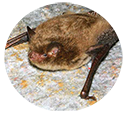 Daubenton’s bat is a medium-sized species. It has a steady flight, often within a few centime-tres of the water surface and is reminiscent of a small hovercraft. Daubenton’s bat is a medium-sized species. It has a steady flight, often within a few centimetres of the water surface and is reminiscent of a small hovercraft. Daubenton’s bats usually feed within about 6km of the roost, but have been recorded following canals for up to 10km (at speeds of up to 25kph). They usually take insects from close to the water and have even been seen taking prey directly from the water surface, using their large feet as a gaff or the tail membrane as a scoop.
Daubenton’s bat is a medium-sized species. It has a steady flight, often within a few centime-tres of the water surface and is reminiscent of a small hovercraft. Daubenton’s bat is a medium-sized species. It has a steady flight, often within a few centimetres of the water surface and is reminiscent of a small hovercraft. Daubenton’s bats usually feed within about 6km of the roost, but have been recorded following canals for up to 10km (at speeds of up to 25kph). They usually take insects from close to the water and have even been seen taking prey directly from the water surface, using their large feet as a gaff or the tail membrane as a scoop.
Habitats
In England and Wales, the majority of known summer colonies are in humid, more or less underground sites near water. These may be tunnels or bridges over canals and rivers, or in caves, mines and cellars. They are only occasionally found in buildings, usually old stone structures such as moated castles and waterworks. In Scotland, colonies more frequently occur in buildings. Tree-holes are probably much more widely used than the recorded evidence suggests and one individual was even observed entering a small hole in an earthen roadside bank. They have also bred in bat boxes. Summer colonies are often quite noisy throughout the day, especially at sites where they are close to human activity. A variety of temporary night roosts are used, often in trees or tunnels close to the feeding sites. Daubenton’s bats have been found clustering with pipistrelle, noctule, Natterer’s and brown long-eared bats.
Diet
Small flies (especially chironomid midges), caddisflies and mayflies.
Mating takes place in the autumn and active males will continue to seek out and mate with females throughout the winter. Maternity roosts are occupied from late spring and sometimes until October. Young bats are suckled for several weeks and are fully weaned and able to forage for themselves at 6 to 8 weeks. Males or non-breeding females may aggregate during the summer to form their own communal roosts, but sometimes join maternity colonies. The average colony size is between 20 to 50 bats (up to 200). Daubenton’s bats can live for up to 22 years.
Echolocation
Daubenton’s bat calls range from 35 to 85kHz and are loudest at 45 to 50kHz. On a bat detector the calls are heard as a machine-gun like series of regular clicks for bursts of 5 to 10 seconds.
 Pipistrelles are active between March and November. They hunt and eat insects on the wing in open spaces between vegetation. A variety of insects are taken, including small moths, midges and lacewings. Mating generally takes place in autumn at mating roosts, females then congregate in maternity roosts between May and August. One young is usually produced between June and mid-July, which will start to fly around three weeks later.
Pipistrelles are active between March and November. They hunt and eat insects on the wing in open spaces between vegetation. A variety of insects are taken, including small moths, midges and lacewings. Mating generally takes place in autumn at mating roosts, females then congregate in maternity roosts between May and August. One young is usually produced between June and mid-July, which will start to fly around three weeks later.
Eat a wide range of foods to ensure that you’re getting a balanced diet and that your body is receiving all the nutrients it needs.
Back In winter the greater horseshoe bat uses caves, disused mines, cellars and tunnels as hibernation sites. These sites can be up to 50km from the breeding roost. The bats wake from hibernation at frequent intervals and, in their search for suitable temperatures, movements of 30km between sites have been recorded.The bats will sometimes form clusters in winter sites, although adult females are more solitary.
In winter the greater horseshoe bat uses caves, disused mines, cellars and tunnels as hibernation sites. These sites can be up to 50km from the breeding roost. The bats wake from hibernation at frequent intervals and, in their search for suitable temperatures, movements of 30km between sites have been recorded.The bats will sometimes form clusters in winter sites, although adult females are more solitary.
The conservation of the species’ feeding habitats and food sources is also important. The use of pesticides has led to a decrease in availability of larger beetles, particularly cockchafers, and moths over large areas of the countryside.
Back The Noctule is our largest bat. All UK bats are nocturnal, feeding on midges, moths and other flying insects that they find in the dark by using echolocation. Noctules roost in holes in trees and bat boxes, but rarely in buildings. During the summer, females form maternity colonies and have just a single pup. Noctules can be seen feeding on insects over the tree canopy; they particularly enjoy eating flying beetles, such as the large Cockchafer. They hibernate over the winter, between November and April.
The Noctule is our largest bat. All UK bats are nocturnal, feeding on midges, moths and other flying insects that they find in the dark by using echolocation. Noctules roost in holes in trees and bat boxes, but rarely in buildings. During the summer, females form maternity colonies and have just a single pup. Noctules can be seen feeding on insects over the tree canopy; they particularly enjoy eating flying beetles, such as the large Cockchafer. They hibernate over the winter, between November and April.
The Noctule has rich, golden-brown fur, with darker wings, ears and face. Its flight is characteristically strong and fast.
Back Sometimes referred to as the 'Water Bat', the Daubenton's Bat forages for small flies, such as midges, caddisflies and mayflies, just above water; it can even use its feet and tail to scoop up insects from the water's surface as it forages. Daubenton's Bats roost near water, under bridges or in tunnels, and in holes in trees. During the summer, females form maternity colonies to have their pups. Daubenton's Bats hibernate underground over winter, in caves, tunnels and mines.
Sometimes referred to as the 'Water Bat', the Daubenton's Bat forages for small flies, such as midges, caddisflies and mayflies, just above water; it can even use its feet and tail to scoop up insects from the water's surface as it forages. Daubenton's Bats roost near water, under bridges or in tunnels, and in holes in trees. During the summer, females form maternity colonies to have their pups. Daubenton's Bats hibernate underground over winter, in caves, tunnels and mines.
The Daubenton's Bat is a small to medium-sized bat, with fluffy brownish fur, a pale silver-grey belly, and a pinkish face.
Back As well as catching insects in free flight, Long-eared bats are gleaners, often flying slowly amongst foliage picking insects off leaves and bark. Their broad wings and tail allow slow, highly manoeuvrable hovering flight. Sometimes they land on the ground to catch insects or to shift them into a controllable position in the mouth and are even able to take insects from lighted windows. Their flight often includes steep dives and short glides.
As well as catching insects in free flight, Long-eared bats are gleaners, often flying slowly amongst foliage picking insects off leaves and bark. Their broad wings and tail allow slow, highly manoeuvrable hovering flight. Sometimes they land on the ground to catch insects or to shift them into a controllable position in the mouth and are even able to take insects from lighted windows. Their flight often includes steep dives and short glides.
These bats are also known as 'whispering bats' because their echolocation sounds are very quiet. They have particularly sensitive hearing and often locate prey from just the sound made by the insect's own movements and not bothering to echolocate. They may also sometimes use vision. Small prey is eaten in flight, but larger insects are taken to a 'perch'. Regularly used perches, which are frequently inside porches or barns, can be recognised by the accumulations of discarded insect remains, particularly the wings of moths such as the Yellow Underwing.
Back This app was designed for volenteers around the world to be able to search for a bat species from our database, either by catagory or by name and to view the species name.
Bats are like a heart monitor for wildlife. Their presence can tell us a lot about the health of the environment because they have an important role in terms of eating insects and acting as pollinators for many different plant species.We hope the Tees Valley Bat Recorder app will encourage more people to monitor their local bats and make a contribution to the global conservation of wildlife.
This app was designed for volenteers around the world to be able to search for a bat species from our database, either by catagory or by name and to view the species name.
Bats are like a heart monitor for wildlife. Their presence can tell us a lot about the health of the environment because they have an important role in terms of eating insects and acting as pollinators for many different plant species.We hope the Tees Valley Bat Recorder app will encourage more people to monitor their local bats and make a contribution to the global conservation of wildlife.
The handheld technology lightens the load for volunteers who previously had to carry three pieces of recording kit to monitor their local bat species. With the launch of the Bat Recorder app, they now only need their smartphone and an ultrasonic microphone..
Back